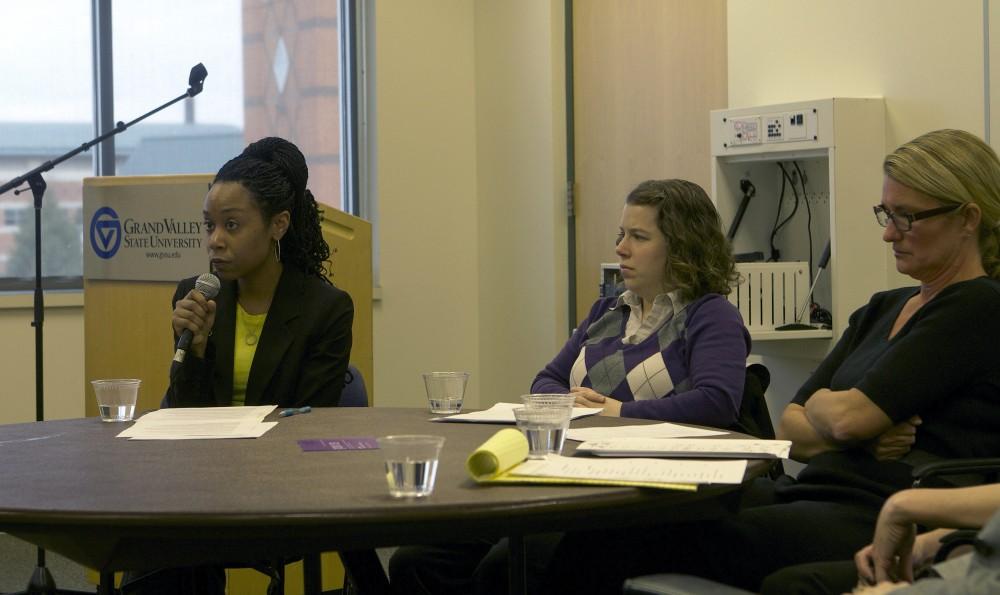Experts discuss child abuse prevention

GVL / Gabriella Patti
Apr 17, 2014
At a Child Abuse Prevention Panel on April 16, it was said that one in six children experience neglect or abuse. The panel started off Grand Valley State University’s acknowledgement of Child Abuse Abuse Awareness Month.
“There are more than 11,000 reports of child abuse and neglect each year in Kent County,” said Bryana Hopkins, the volunteer manager at Family Futures, which hosted the panel.
Family Futures is an organization that works to prevent child abuse and neglect.
“As a mission and data driven organization, we help to shape a community that protects children from abuse and neglect,” Hopkins said. “Rather than responding to problems with Band-Aid solutions, our legacy of impact is based on a preventative approach, and it’s working.”
The panel consisted of five specialists who spoke about different aspects of child abuse and neglect and what can be done to promote awareness and bring an end to these atrocities.
Sarah Boucher, director of business development for Starr Disability Advocates, addressed the myths surrounding child abuse and neglect.
“One myth is that children who are abused did something to deserve it. Many children believe this, but it is never the victim’s fault,” Boucher said.
Lori Marthens, a former foster parent of almost 50 foster children, reminded the audience of the humanity of those who suffer from abuse by sharing the stories of trauma many of her foster children have to live with.
Marthens said she fostered a young child who was hit so hard by his mother that his optic nerve was severed.
“He looked like a prizefighter,” Marthens said. “When I picked him up, I did my best to hold it together for this little guy, but I ended up crying the whole drive home.”
Child Protective Services, a part of the state department, works on cases like these and helps to determine what the best steps are to take for the protection and well-being of the child.
“There are several central call centers where concerned persons — family, friends, neighbors, school and medical professionals (mandated reporters) — can call to report child abuse or neglect,” said Lenair Correll, a social work therapist with D.A. Blodgett – St. John’s. “Abuse can be reported by either a child or an adult.”
Correll also addressed different ways to identify abuse based on physical and behavioral indicators. For example, children experiencing physical neglect may regularly display fatigue or listlessness, fall asleep in class, steal or hoard food, beg from classmates or report that no caretaker is at home.
“In addition to the inherent benefits of preventing the abuse and neglect of children, there are also economic benefits to prevention,” Hopkins said.
Boucher agreed, saying that child maltreatment costs the nation as much as $250 million each day, or about $94 billion each year. Prevention focused programs such as Family Futures cost a fraction of this total amount.
Services like Family Futures work directly with the families to prevent abuse and neglect with the hope that the families can be educated and rehabilitated so they can stay together.
“Prevention is important because it is possible,” Hopkins said. “Child maltreatment is not inevitable. When parents and caregivers know what to expect and how to create safe and nurturing environments, their children can thrive.”






















